Motorcycle Beginner - Year 2: 2013 Honda NC700S Review
Sensible, practical, and reliable. Not the prettiest of the group and definitely not the strongest or the fastest, but good enough to get the job done well and efficiently. A bit on the heavy side but carries its weight surprisingly well. Perhaps a little boring at first glance, but give it time and its many little quirks will grow on you.
No, I’m not describing Honda’s new NC700S there, but rather yours truly, the Motorcycle.com Newbie. But perhaps that’s why the bike feels like such a good match for me.
Associate Editor Troy Siahaan recently tested Honda’s NC700X and found it to be an inexpensive, practical motorcycle, a contemporary take on the Universal Japanese Motorcycle reflecting the modern consumers’ demand for fuel-efficiency and affordability. But for an experienced sportbike rider like Troy, accustomed to high-revving engines and an abundance of horsepower, the much more sedate NC700X with its 6500 rpm redline and claimed 51-hp output may seem rather pedestrian. But for a less-experienced rider like myself looking for a bike to take him to work and get him around town, Honda’s NC700 bikes are an intriguing new option.
Our initial plan was for me to test the NC700X and provide a review from a different perspective from Troy’s. Unfortunately we were unable to secure one from Honda, but we were able to get our hands on its sibling, the NC700S.
The New Concept
The NC700X and NC700S were introduced at the 2011 EICMA show in Milan on the heels of the Integra scooter with which they share engines and frames. The Integra will not be imported to North American markets this year, while American Honda decided to import only the NC700X. Up here in Canada, however, we have the fortune of choosing the adventure-style X or the naked standard S versions.
Canada is a much smaller market than the U.S., so Honda Canada has to be a bit savvier about which models it chooses to introduce, and with what options. Though Canadians get the option of the NC700S or the NC700X, they do not have the option of getting either model equipped with Honda’s second-generation Dual Clutch Transmission offered in other markets, likely because it would make the NC700 models too expensive for budget-minded Canucks.
On the other hand, Honda Canada has been very proactive when it comes to its combined anti-lock brake technology, offering ABS as standard equipment on most of its streetbikes, including the NC700X and NC700S, while a select handful of large-volume models such as the CBR250R and the CBR600RR have ABS available as an option. ABS is available on the U.S.-spec NC700X, but only with the DCT; American customers who want ABS but don’t want to fork out the extra $2000 for DCT are out of luck.
Honda gave the NC700X an adventure-bike look with a raised “beak” fender and longer-travel suspension, following the latest industry trend of offering streetbikes with off-road pretensions, though tacitly admitting customers are likely to keep their tires on the tarmac. The NC700S holds no such illusions however, maintaining a more conventional modern naked standard appearance.
The S has a lower seat height at 31.1 inches to the X’s 32.7 inches, mainly due to its lower suspension that also constricts the wheelbase from 60.6 inches to 60.0. The NC700S is said to be 7 pounds lighter than the X, with a wet weight of 473 pounds, and its handlebars are lower, so its riding position isn’t quite as upright as its sibling. The NC700X promises better wind protection with its taller, adjustable windscreen.
Beyond that, both models offer the same 670cc parallel-Twin engine claiming 47.6 hp at 6250 rpm and 44 ft-lb. at 4750 rpm, modest numbers for its size, but the real number Honda would like to highlight is the fuel economy claim of 64 mpg, a remarkable number for a twin-cylinder engine of its size.
The engine is canted forward 62 degrees, lowering the center of gravity and also creating a space for a storage area where you’d expect the fuel tank to be. The fuel tank is actually under the seat, helping to further lower the center of gravity.
The Neat Cockpit
The first thing I noticed about the 700S is how easy it is to lift it off its sidestand. At a claimed weight of 473 pounds, fully-fueled, the NC is about 50 pounds heavier than my old Suzuki GS500E, though sitting on NC700S I could not feel the difference. The positioning of the fuel tank and engine cylinders provide for a low center of gravity, making the NC seem lighter than it is.
The handlebars are set at a comfortable height, allowing for fairly upright sitting position. The seat itself is wide at the rear but tapers toward a thin waist that allows for an easy reach when planting your feet on the ground. With your feet on the footpegs, however, your knees are spread apart to accommodate the 21-liter storage area. I prefer having my knees closer together gripping a thinner tank, and I often found myself sliding back in the seat as a result, making the ride uncomfortable at times. However, the generous onboard luggage space is worth the trade-off.
On the left handlebar, Honda positioned the turn-signal control below the horn button, a reverse from the usual layout. Riders who are used to having the switch higher up on the left handlebar could find themselves hitting the horn by mistake, but the change was easy to adapt to, thanks in part to the concave shape of the horn switch. A newer rider may find this arrangement a little easier as the left thumb doesn’t have to move as far to reach the signal toggle. I know I sometimes found myself honking the horn trying to cancel a turn signal on my GS with its conventional layout, so the NC’s turn signal position felt more intuitive.
As Troy noted in his review of the X, the NC700 engine provides ample torque at low revs. With just the slightest twist of the throttle, the NC700S surges forward with surprising gusto, despite the engine revving barely above its 1200-rpm idle. The engine is amazingly quiet with a rhythmic throbbing like a V-Twin thanks to its 270-degree firing order.
The Nimble Commuter
In hindsight, I probably could have picked a better date to pick up a new press bike. Not only had the weatherman predicted heavy rain and thunder, it was also the day after Labor Day, making it one of the worst commuting days of the year as the normally dense Toronto traffic grew denser with back-to-school traffic.
At the very least, the weather provided the chance to test Honda’s combined ABS system and determine whether the lockable storage area was indeed waterproof. The freeway looked more like a driveway on the way up to Honda Canada headquarters due to the heavy traffic, so I opted to take the city streets for the 24-mile ride to the office. It only took a few minutes to see the NC700S was designed for such urban riding. With frequent traffic lights and speeds topping out around 40 mph, the readily available torque proved immensely useful.
The NC’s 6500-redline may seem constraining to some riders, but I was used to short shifting on my old Suzuki to improve fuel economy. In city riding, I actually found I needed to shift less often than I did on my GS because the bulk of its torque is readily available by 3000 rpm. I felt like I could ride the NC700S around the city all day without having to shift out of second gear. And when shifts were required, the clutch lever proved to be easy to operate and the six-speed transmission changed gears with a satisfying “thunk.” It was easy to develop a feel for when to shift gears, which turned out to be helpful because the thin LCD tachometer wasn’t always easy to discern at a quick glance.
Eventually I reached the Bayview Extension, a faster thoroughfare in Toronto’s Don Valley leading to the downtown core popular with motorcyclists because of its swooping curves, high speeds and light traffic. Finally given the opportunity to pick up the pace, I opened the throttle and descended into the valley.
At higher speeds, the lack of wind protection became more apparent. I later took the NC700S on the highway in calmer weather and was easily able to maintain a 75-mph pace, but the wind becomes more of a hindrance at faster speeds.
The NC700S’ steering response is light at both slow and fast speeds, and it only takes the slightest of inputs on the wide handlebars to adjust your lean angle or swiftly hop over a lane. Despite the modest power figures and emphasis on fuel economy, the light steering and precise throttle control make the NC700S a fun machine to ride.
Now Caffeinated
When I first started commuting to work last year on a Honda CBR250R, I had to rely on a backpack to carry my lunch and a change of clothes. I didn’t mind looking somewhat dorky with the bag, though the weight on my back made riding to work uncomfortable at times, and I usually arrived with my back soaking with sweat. The previous owner of my GS500E included a tank bag and saddlebags with the bike so when I bought the Suzuki, I ditched the backpack and primarily used the tank bag. It still looked dorky but at least I was comfortable.
The Honda NC700S provided another alternative thanks to its lockable storage area built into the body. The lid is plastic, so my original plan to use both the storage space and my magnetic tank bag didn’t pan out, but the 21 liters of storage was more than enough for everyday use. Honda offers a 29 liter pannier set and a 45 liter top-box to expand the storage capacity.
During my commutes, I’d carry a small laptop, a change of clothing and my lunch with ample room to spare. I kept all my belongings in one of those canvas shopping bags, making it a cinch to load or unload. When I arrived at the office, I simply took out the bag and replaced it with my helmet and gloves.
The one thing I missed when I riding to work on my GS500 was being able to brew my own coffee in the morning and take it with me to the office. My travel mug has a pretty good water-tight stopper, but I would never try to carry it in my tank bag as it would have to lie horizontally to fit and I didn’t want to risk soaking my clothes with my Colombian roast. With the NC700S, however, the storage space is deeper than it is wide, so I can carry my coffee upright and not worry about it spilling.
There are a couple of caveats, however. Honda cautions against carrying more than 11 pounds in the storage area. So, while it may be useful for a run to the grocery store, it’s not a good idea to get a frozen turkey, though you could probably fit one in there. For most usage, 11 pounds is more than enough.
Though I wouldn’t carry a frozen turkey in the luggage box, it could probably be a good way to defrost one. Because it sits directly over the engine, the storage space can get toasty after a long ride, as I discovered one evening when I went home for dinner after work before heading out again. I left my helmet and gloves in the storage area and when I came back to the garage about an hour later, my helmet was noticeably warm. It wasn’t hot enough to be uncomfortable for a cool September evening, but it may be a different story on a hot July afternoon.
If I had one criticism for the NC’s luggage box, it’s that the lid doesn’t close flush against its frame. Instead of a smooth curve fitting with the rest of the body, the lid is ringed by a half-inch bevel that spoils the illusion of a traditional motorcycle fuel tank.
The New Conclusion
The Honda NC700S proved to be a more than capable commuter. Wind protection may limit its effectiveness on longer trips, but the bike really shines in urban use where the engine’s low-end torque and nimble handling were more than up to the task.
More impressive was how little gas the NC700S swallows. In my time with the bike, I managed to squeeze out 65 mpg, matching Honda’s fuel economy claims. That’s with a mix of stop-and-go city traffic and fast freeway speeds, and I didn’t once feel like I was babying the engine to save fuel.
If there was one thing that would stop me from going to my nearest dealer with a deposit in hand, it’s Honda Canada’s pricing. In the U.S., the NC700X is priced competitively at $6999 for the non-DCT and non-ABS version.
In Canada, however, the ABS-equipped NC700S is priced at CN$8799 while the NC700X with ABS is a bit pricier at CN$8999. In contrast, $8999 in the U.S. would net the NC700X with DCT and ABS. Canadian consumers are used to paying more than their American neighbors for the same goods, but with the Canadian dollar on par with the greenback (or slightly ahead as of this writing) the $2000 price difference is a big roadblock.
Related Reading
2012 Honda NC700X Review - Video
Motorcycle Beginner - Year 2: Motorcycle Ownership
Motorcycle Beginner - Year 2: The First Accident
Motorcycle Beginner - Year 2: Buying Your Next Bike
More by Dennis Chung



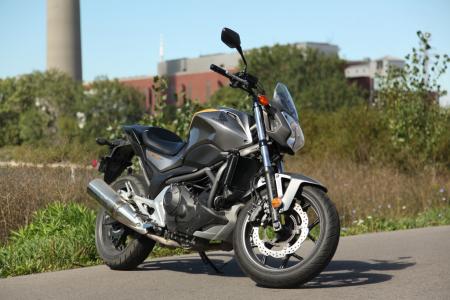















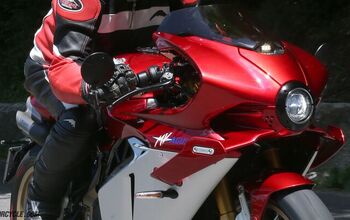

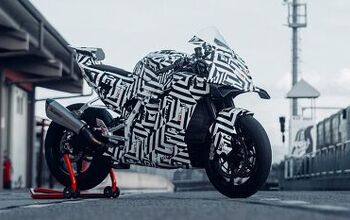

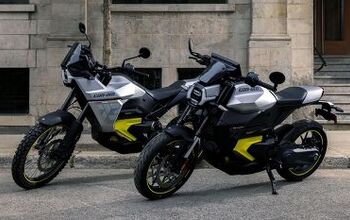

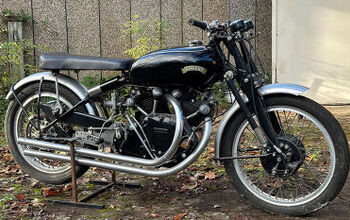


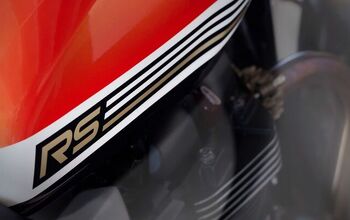

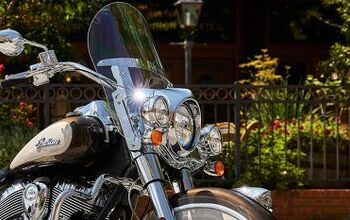

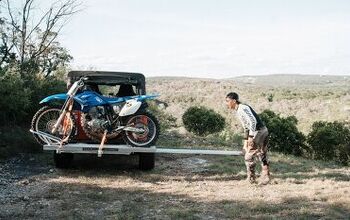

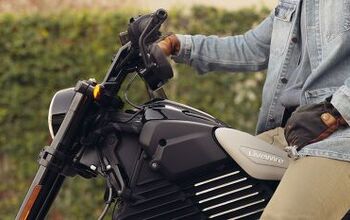
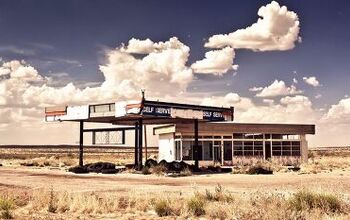
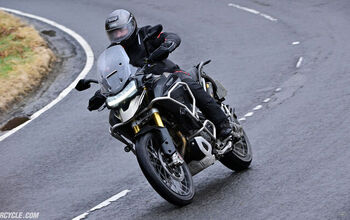
Comments
Join the conversation